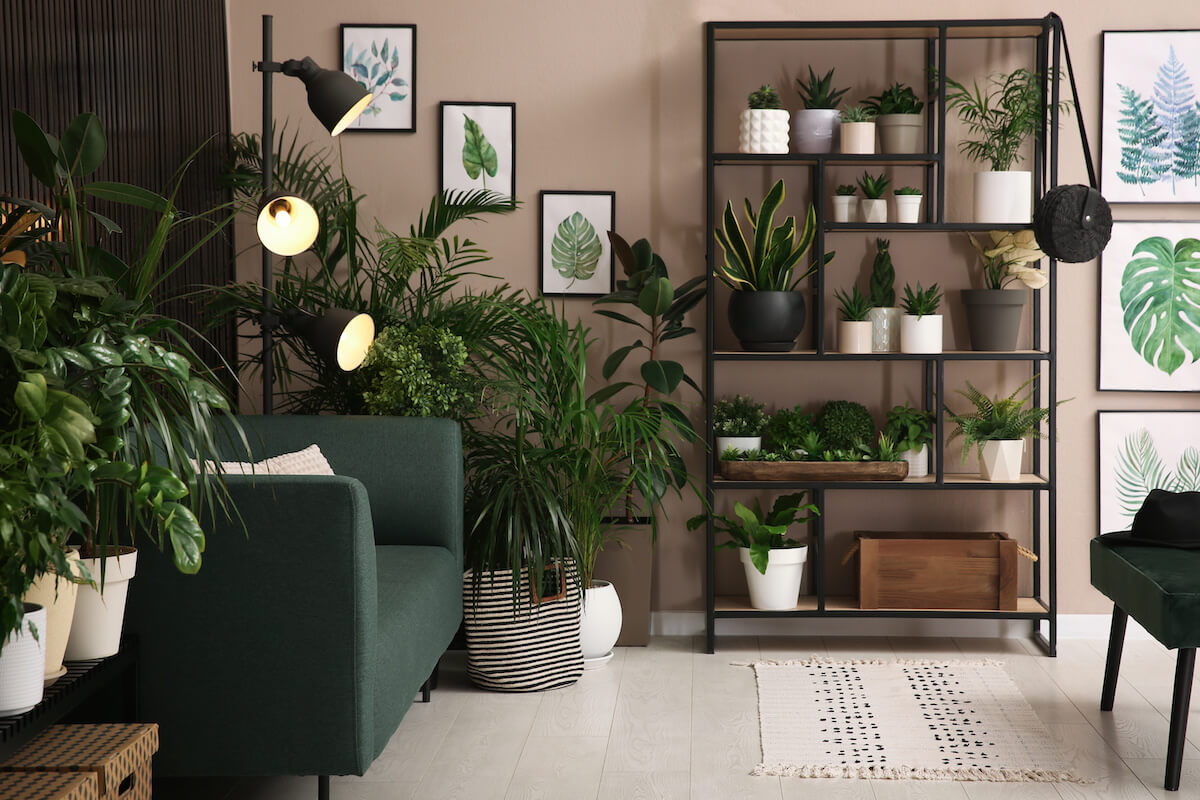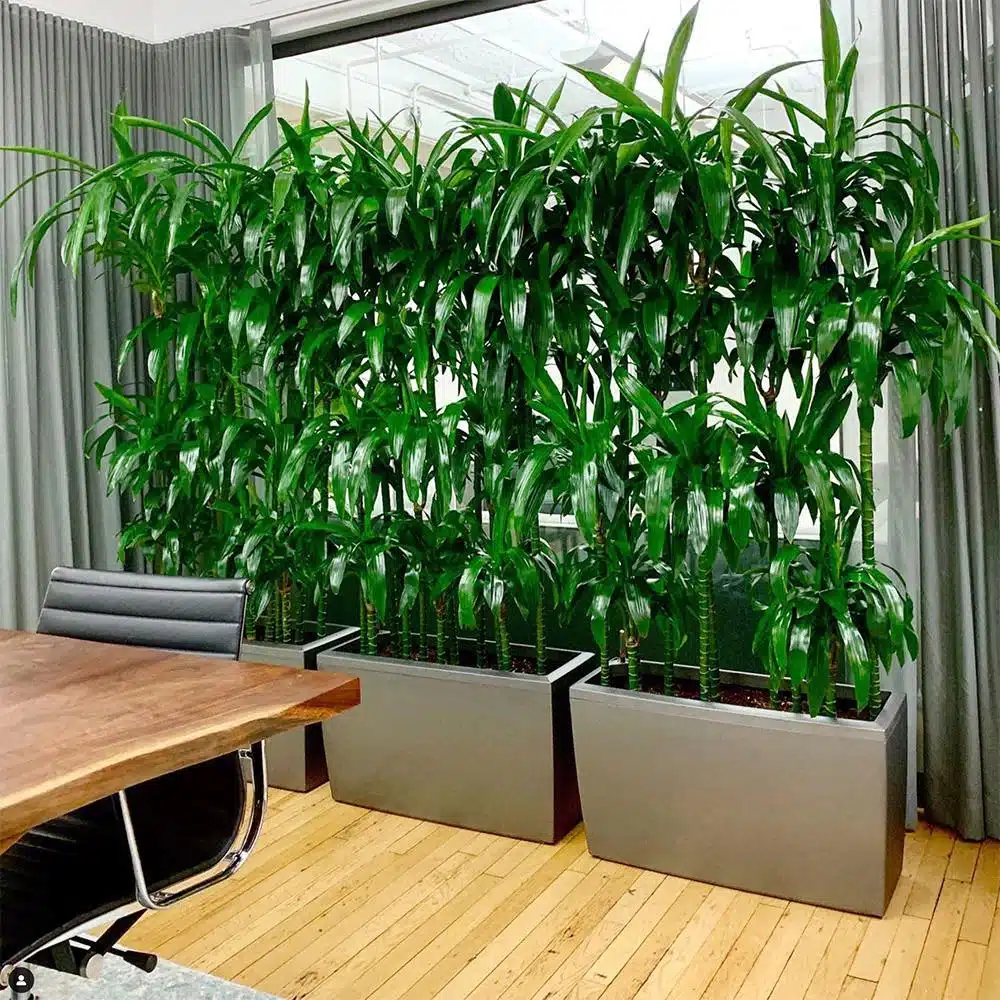Uncover the Secrets of Low-Light Indoor Plants and How They Enhance Your Atmosphere
Low-light interior plants have actually amassed enhancing focus for their one-of-a-kind ability to enhance both aesthetic appeal and ecological quality within homes and workplaces. These resilient species, including the Serpent Plant and Tranquility Lily, not just prosper in difficult illumination problems however likewise play a critical function in air purification and emotional health. Comprehending the specific advantages and care needs of these plants can dramatically impact your home. As we explore the ins and outs of their benefits, you may discover insights that could transform your surroundings in unanticipated means.
Benefits of Low-Light Indoor Plants
Although many individuals think that indoor plants call for plentiful sunshine to flourish, low-light interior plants provide a multitude of advantages that make them suitable for various settings. One of the main benefits is their versatility; they can prosper precede with minimal natural light, such as workplaces, basements, or spaces with tiny windows. This attribute enables people to enhance their environments with plant, adding to boosted aesthetics without the requirement for extensive illumination modifications.
Additionally, low-light interior plants can considerably boost interior air high quality by filtering system damaging contaminants and launching oxygen, making living areas healthier. Study has shown that specific varieties can absorb contaminants, hence promoting a cleaner ambience. Additionally, they can enhance mental wellness by reducing anxiety and boosting performance. The visibility of plants has actually been linked to greater feelings of harmony and emphasis.
Moreover, low-light plants commonly need less maintenance than their sun-loving counterparts, making them ideal for busy people or those brand-new to horticulture. Their durability allows them to flourish with minimal treatment, therefore supplying a gratifying experience for plant enthusiasts and novices alike. In recap, low-light interior plants serve both functional and visual purposes, making them beneficial enhancements to any type of area.
Top Low-Light Plant Varieties
Low-light interior plants can be found in a range of types, each offering distinct characteristics and advantages suited for dark environments. Amongst the most prominent varieties is the Serpent Plant (Sansevieria), known for its architectural leaves and air-purifying abilities. This resistant plant flourishes on neglect and can endure a wide variety of light problems.
Another superb choice is the ZZ Plant (Zamioculcas zamiifolia), which includes glossy, dark environment-friendly leaves and is very drought-tolerant. Its adaptability makes it a favored for offices and homes with minimal sunlight.
The Pothos (Epipremnum aureum) is likewise a leading competitor, with its routing vines and heart-shaped fallen leaves - Best low-light indoor plants. This versatile plant can be trained to climb up or cascade, including aesthetic interest to any kind of space

Care Tips for Low-Light Plants
Taking care of low-light interior plants needs a nuanced understanding of their particular demands to make sure optimal development and vitality. It is crucial to choose the best potting mix, as a well-draining dirt is essential to protect against root rot. A mix made for houseplants, usually consisting of peat moss and perlite, works well for a lot of low-light selections.
Watering is an additional key element of treatment. Low-light plants generally require less regular watering contrasted to their sun-loving counterparts.
Fertilization must be come close to with care. During the growing period, a watered down fluid fertilizer can be applied monthly, however in wintertime months, many low-light plants go into inactivity and require little to no fertilization.
Last but not least, it's important to periodically cleanse the fallen leaves to eliminate dirt, enabling better light absorption. By adhering to these care suggestions, you can grow a growing setting for your low-light interior plants, boosting both their look and long life.
Enhancing Air Top Quality With Plants
Interior plants play a significant role in improving air high quality within homes and office spaces. Via the procedure of photosynthesis, these plants soak up co2 and launch oxygen, adding to a healthier ambience. Furthermore, particular low-light interior plants possess the capability to filter dangerous contaminants, such as benzene, formaldehyde, and trichloroethylene, which are frequently discovered in indoor settings.

Furthermore, the presence of indoor plants can increase moisture degrees, which aids ease completely dry skin and breathing problems, additionally enhancing general wellness. This ability to enhance air quality not just advertises physical health and wellness however likewise supports psychological health.
Integrating low-light indoor plants into your living and working rooms can cause a much more invigorating and vibrant setting (Best low-light indoor plants). Buying these natural air cleansers is a straightforward yet reliable method for improving indoor air quality and cultivating a healthier way of living
Developing a Serene Indoor Space
The integration of plants into living spaces not just enhances air top quality however also adds to a relaxing atmosphere. Low-light interior plants, such as snake plants and pothos, are particularly reliable in creating a calm atmosphere, as they thrive in problems that may or else be unwelcoming for other plant. Their rich vegetation offers a relaxing aesthetic, lowering tension and advertising relaxation.
Integrating these plants into your office or home can stimulate a sense of tranquility and well-being. Purposefully placing them in locations where you invest considerable time, such as living work spaces or spaces, enables an immersive experience with nature, which has been revealed to boost visit this web-site mood and cognitive feature.
Moreover, the gentle activity of leaves in feedback to airflow can develop a vibrant useful site visual component that improves the total ambiance. Take into consideration using a range of plant elevations and appearances to add depth and rate of interest to your room. With thoughtful placement and care, low-light indoor plants can change any kind of location into a tranquil refuge, cultivating not only aesthetic contentment but emotional and additionally psychological health.
:strip_icc()/peace-lily-spathiphyllum-wallisii-domino-bd41865a1-252ea4c0b35b43d19a41435b16a9cd01.jpg)
Conclusion
Including low-light indoor plants right into various settings yields significant benefits, consisting of improved air top quality and enhanced aesthetic allure. These hardy varieties not only prosper in marginal light but additionally contribute to a soothing ambience, promoting psychological and emotional health. By selecting suitable selections and implementing appropriate treatment techniques, individuals can effectively grow a serene indoor area that cultivates well-being and efficiency. The transformative power of low-light plants emphasizes their worth in enhancing both occupational and domestic settings.
Although several individuals presume that interior plants need plentiful sunlight to flourish, low-light indoor plants offer a wide range of benefits that make them perfect for various environments.Moreover, low-light interior plants can significantly boost interior air high quality by filtering damaging toxic substances and releasing oxygen, making living spaces healthier. In addition, specific low-light indoor plants possess the ability to filter unsafe pollutants, such as formaldehyde, trichloroethylene, and benzene, which are my explanation commonly found in interior environments.
Low-light indoor plants, such as serpent plants and pothos, are especially effective in developing a tranquil environment, as they prosper in conditions that might otherwise be unwelcoming for other plant.Incorporating low-light interior plants right into different environments yields substantial benefits, consisting of enhanced air top quality and enhanced visual appeal.